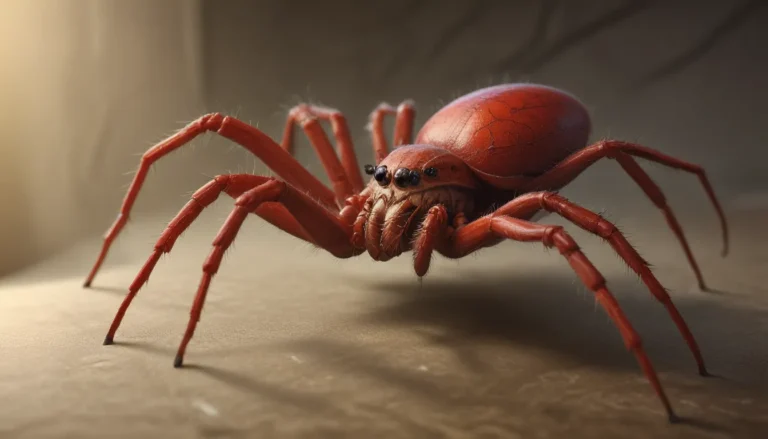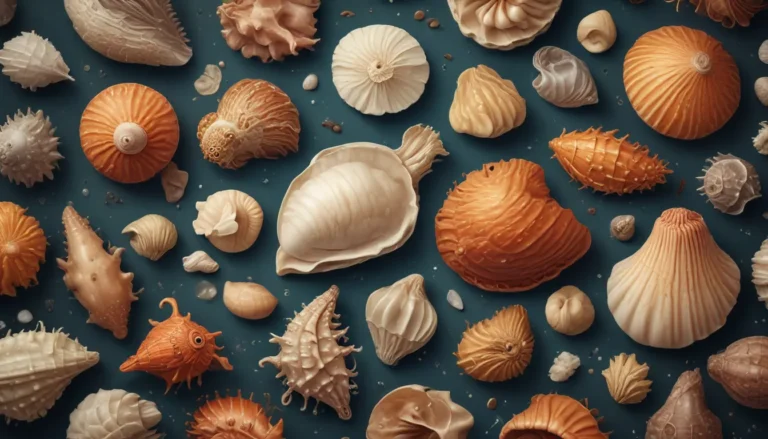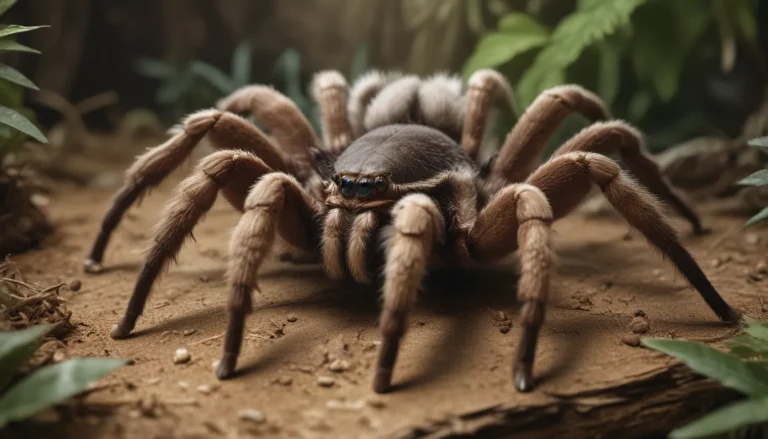The pictures we use in our articles might not show exactly what the words say. We choose these pictures to make you interested in reading more. The pictures work together with the words but don’t take their place. The words still tell you the important facts.
Are you ready to dive deep into the mesmerizing world of zoanthids? These colorful and captivating marine creatures have intrigued divers and marine enthusiasts around the globe with their vibrant hues and intricate patterns. As a type of cnidarian closely related to corals and sea anemones, zoanthids offer a glimpse into the wonders of the underwater world. In this article, we will explore 14 intriguing facts about zoanthids, shedding light on their characteristics, behaviors, and importance in marine ecosystems. From their unique feeding habits to their symbiotic relationships with other marine organisms, zoanthids are truly fascinating creatures worth getting to know. So, let’s embark on a journey of discovery and uncover the secrets of these captivating organisms.
Unveiling the Secrets of Zoanthids: Key Takeaways
- Zoanthids are colorful, colonial marine creatures with a symbiotic relationship with algae. They have unique feeding strategies and can adapt to different lighting conditions, making them a popular choice for aquarium enthusiasts.
- Some zoanthids are highly toxic and can bioluminesce, adding vibrant and dynamic elements to marine environments.
Discovering the World of Zoanthids
Zoanthids are Colonial Animals
Zoanthids are not single organisms but rather colonies of polyps that live together in a close-knit community. Each polyp within the colony has its own individual tentacles and mouth, but they share a common base known as the coenenchyme.
A Rainbow of Colors: The Vibrant Hues of Zoanthids
One of the most remarkable features of zoanthids is their vibrant coloration. From neon greens and fiery oranges to deep blues and mesmerizing purples, these organisms showcase a stunning spectrum of hues that add beauty to any marine environment.
Symbiotic Relationships: Zoanthids and Photosynthetic Algae
Within the tissues of zoanthids, there are microscopic photosynthetic algae called zooxanthellae. These algae absorb sunlight and provide essential nutrients through photosynthesis. In return, zoanthids offer protection and a stable environment for the algae to thrive.
Diverse Habitats: Where Can You Find Zoanthids?
Zoanthids inhabit a wide range of environments, including coral reefs, rocky shores, and sandy seabeds. They are often found attached to hard substrates such as rocks, shells, or dead corals.
The Toxic Truth: Some Zoanthids are Highly Toxic
While they may appear harmless, some species of zoanthids possess potent toxins as a defense mechanism against predators. It is essential to handle them with caution and avoid direct contact to prevent harm.
Feeding Frenzy: Zoanthids’ Unique Feeding Strategy
Zoanthids are primarily carnivorous and rely on their tentacles to capture small prey such as plankton and other microscopic organisms. They use their nematocysts, specialized cells that contain venomous harpoons, to immobilize their prey before consuming them.
The Cycle of Life: Reproduction in Zoanthids
Zoanthids have the ability to reproduce both sexually and asexually. Asexual reproduction commonly occurs through budding, where new polyps form and eventually detach from the parent colony. Sexual reproduction involves the release of gametes into the water, leading to fertilization and larval formation.
Illuminating Beauty: Bioluminescence in Zoanthids
Certain species of zoanthids have the fascinating ability to emit a luminous glow known as bioluminescence. This serves various purposes, including attracting prey, communication within the colony, and defense mechanisms.
Light Lovers: Zoanthids’ Adaptability to Different Lighting Conditions
Depending on the species, zoanthids can thrive in a wide range of lighting conditions. Some prefer low light environments while others thrive in bright, high-intensity light. This versatility makes them a great addition to both beginner and advanced marine aquariums.
Aquarium Enthusiasts’ Delight: The Allure of Zoanthids
Due to their incredible colors and unique growth patterns, zoanthids are highly prized by aquarium enthusiasts. Many reef tank hobbyists dedicate entire aquariums to these captivating organisms, creating a stunning display of living art.
Traditional Uses: Zoanthids in Medicine
In some cultures, zoanthids have been used for their supposed medicinal properties. However, it is important to note that their toxicity should be considered, and their use for medicinal purposes is not scientifically validated.
The Importance of Water Quality: Ensuring Zoanthids’ Well-Being
Proper water parameter maintenance is crucial for the health and growth of zoanthids. Regular testing and monitoring of water quality, including temperature, pH, and nutrient levels, are essential to ensure their well-being in both aquarium and natural environments.
Ancient Survivors: Zoanthids’ Long Evolutionary History
Zoanthids have a long evolutionary history, with fossil evidence dating back millions of years. Their ability to adapt to changing environments has enabled them to survive and thrive throughout the ages.
Growth Spurts: Zoanthids’ Rapid Growth Rates
Under favorable conditions, zoanthids can exhibit rapid growth rates, quickly covering available substrate with their colorful colonies. This rapid growth makes them a popular choice for aquarists looking to add vibrant and dynamic elements to their tanks.
Delving Deeper into the World of Zoanthids
Zoanthids are mesmerizing creatures that offer a unique and vibrant addition to any marine aquarium. With their stunning colors, intricate patterns, and interesting behaviors, they are highly sought after by both novice and experienced aquarists. From their symbiotic relationships with photosynthetic organisms to their ability to reproduce through budding, zoanthids exhibit a wide range of fascinating characteristics. Their toxic defense mechanism and adaptability to different environments further contribute to their allure.
Caring for zoanthids requires knowledge and attention, but the rewards are well worth it. By providing them with the right conditions, proper lighting, and regular maintenance, you can enjoy the beauty and vibrancy of these incredible creatures for years to come. Intriguing, captivating, and visually stunning, zoanthids are a remarkable addition to any marine tank. So, why not explore the world of zoanthids and bring these captivating creatures into your own home?
FAQs: Your Questions Answered
Q: What are Zoanthids?
A: Zoanthids are a type of marine invertebrate belonging to the order Zoantharia. They are commonly found in coral reefs around the world and are known for their colorful appearance and unique patterns.
Q: How do Zoanthids reproduce?
A: Zoanthids reproduce through a process called budding, where a new polyp develops from the base of an existing polyp. This allows them to rapidly form colonies and expand their population.
Q: Are Zoanthids toxic?
A: Yes, some species of zoanthids produce potent toxins as a defense mechanism. It is important to handle zoanthids with care and avoid any direct contact, as their toxins can be harmful or even deadly.
Q: What conditions do Zoanthids require in an aquarium?
A: Zoanthids thrive in a well-maintained marine aquarium with stable water parameters. They require moderate to high lighting levels and regular water flow. It is essential to provide them with proper water quality, including stable temperature and salinity.
Q: Can Zoanthids be kept with other corals?
A: It is possible to keep zoanthids with other corals in a reef aquarium. However, you must ensure that the other corals are compatible with zoanthids in terms of lighting, flow, and aggression. Some corals may release toxins that can harm or kill zoanthids.
Q: How can I prevent Zoanthids from overgrowing in my aquarium?
A: To prevent zoanthids from overgrowing and taking over your aquarium, you can manually trim their colonies as they expand. Regular pruning will help maintain a balanced and visually appealing tank while allowing other corals and organisms to thrive.
Conclusion: A Dive into the World of Zoanthids
Zoanthids are fascinating creatures that offer a unique and vibrant addition to any marine aquarium. With their stunning colors, intricate patterns, and interesting behaviors, it’s no wonder they are highly sought after by both novice and experienced aquarists.
From their symbiotic relationships with photosynthetic organisms to their ability to reproduce through budding, zoanthids exhibit a wide range of fascinating characteristics. Their toxic defense mechanism and their adaptability to different environments further contribute to their allure.
While caring for zoanthids requires some knowledge and attention, the rewards are well worth it. By providing them with the right conditions, proper lighting, and regular maintenance, you can enjoy the beauty and vibrancy of these incredible creatures for years to come.
Intriguing, captivating, and visually stunning, zoanthids are truly a remarkable addition to any marine tank. So, why not dive into the world of zoanthids and bring these captivating creatures into your own home?
Unleash the Wonder of Zoanthids
Zoanthids' vibrant colors and fascinating biology make them a captivating subject, but there's so much more to discover in the underwater world. Dive into the wonders of coral reefs, where countless species thrive in delicate ecosystems. Explore the secrets of saltwater, the lifeblood of our oceans, and its crucial role in sustaining marine life. Immerse yourself in the intriguing field of marine biology, where dedicated scientists work tirelessly to unravel the mysteries of the deep. Embark on a journey of discovery and uncover the astonishing beauty and complexity of life beneath the waves.
Was this page helpful?
Our commitment to delivering trustworthy and engaging content is at the heart of what we do. Each fact on our site is contributed by real users like you, bringing a wealth of diverse insights and information. To ensure the highest standards of accuracy and reliability, our dedicated editors meticulously review each submission. This process guarantees that the facts we share are not only fascinating but also credible. Trust in our commitment to quality and authenticity as you explore and learn with us.






